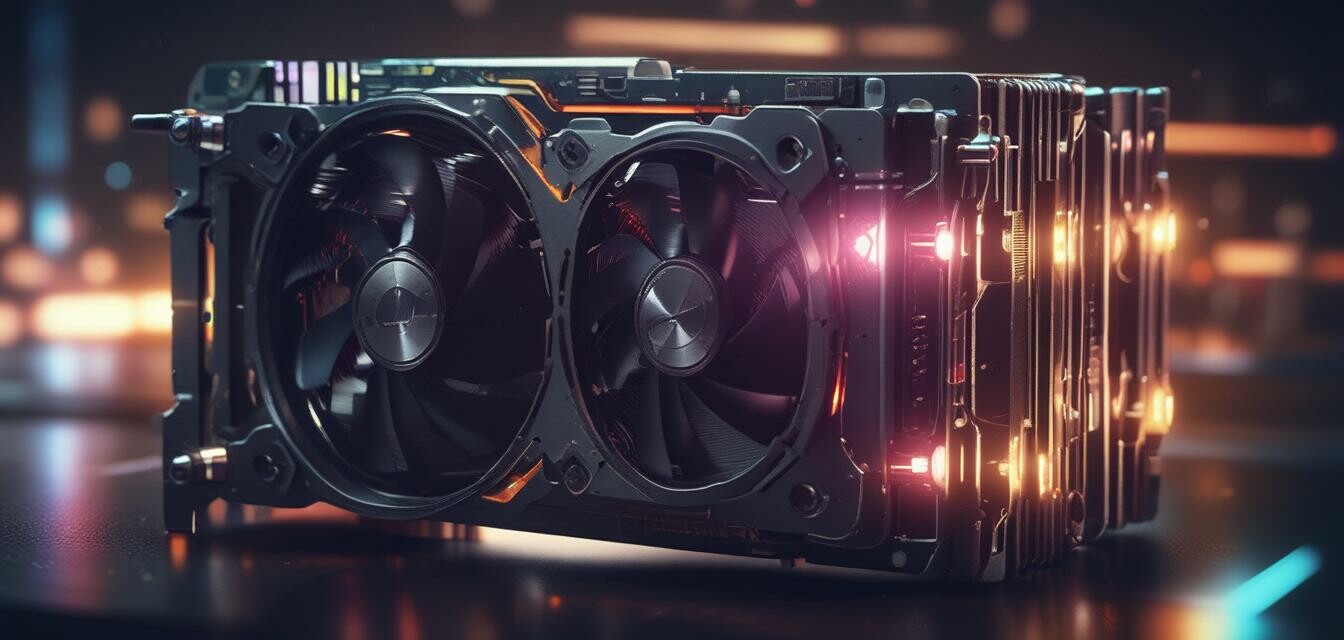
Innovations in gaming graphics cards for 2025
Key Takeaways
- Emerging technologies are set to revolutionize gaming graphics cards.
- Real-time ray tracing and AI-driven enhancements will become standard.
- Lower power consumption without sacrificing performance is a major trend.
- New architectures are built to support expansive resolutions, enhancing visualization.
- The integration of cloud gaming technologies is poised to change how we experience games.
The world of gaming is ever-evolving, and at the heart of that evolution lies the graphics card—the engine that drives visual performance in video games. As we look towards 2025, several exciting innovations are poised to redefine what gamers can expect in terms of graphics quality, performance, and functionality. In this article, we will delve into these upcoming trends and technologies that promise to elevate the gaming experience to new heights.
The rise of real-time ray tracing
Real-time ray tracing has been a topic of excitement in the gaming world, and by 2025, it’s expected to become more widespread across gaming graphics cards. This technology simulates realistic lighting, shadows, and reflections, offering immersive environments that bring games to life.
Key Features of Ray Tracing Technology
| Feature | Description |
|---|---|
| Dynamic Lighting | Realistic illumination that reacts to game environments. |
| Enhanced Shadows | Complex shadows that provide depth and realism. |
| Reflections | Mirrored surfaces that showcase the surrounding environment. |
As game developers adopt real-time ray tracing into their workflows, gamers can expect richer graphics that enhance immersion and gameplay. With many upcoming titles supporting this technology, it will become essential for 2025's graphics cards.
Artificial Intelligence and Machine Learning Integration
Artificial intelligence (AI) and machine learning (ML) are rapidly infiltrating the gaming graphics card market. These technologies can optimize rendering processes, allowing GPUs to process graphics more intelligently and efficiently.
Benefits of AI in Graphics
- Improved frame rates while maintaining high resolutions.
- Dynamic scaling of graphics settings based on system performance.
- Better visual effects and textures through predictive algorithms.
The adoption of AI-driven enhancements will be a hallmark of gaming graphics cards in 2025. As algorithms evolve, they will help create a tailored gaming experience without the need for extensive hardware upgrades.
Lower Power Consumption
One of the most significant trends in the gaming hardware landscape is the push towards energy efficiency. By 2025, graphics cards will leverage architectures designed for low power consumption without sacrificing performance.
Why Power Efficiency Matters
| Reason | Impact |
|---|---|
| Cost Savings | Reduced electricity bills for gamers due to efficient energy use. |
| Heat Management | Less heat generation leads to longer lifespan for hardware. |
| Environment Friendly | Supports sustainability efforts by reducing overall energy consumption. |
This transition will not only have economic advantages for gamers but also align with global efforts toward more sustainable technology.
New Architectures for High Resolution Support
With the increasing popularity of 4K and 8K resolution gaming, industry leaders are focusing on creating graphics cards with new architectures that support these high resolutions seamlessly. This focus will allow for more stunning visuals without compromising performance.
Architectural Innovations
- Enhanced memory bandwidth to handle larger data streams.
- Dedicated cores for handling advanced rendering tasks.
- Optimized memory interfaces for faster data transfer rates.
These innovations will redefine gaming visuals in terms of detail, clarity, and overall immersion, placing gamers at the center of a visually breathtaking experience.
The Future of Cloud Gaming and Graphics Cards
As cloud gaming technology continues to evolve, graphics cards of the future will have to accommodate this shift. By 2025, more gamers will likely rely on cloud services, meaning that GPUs must be designed to support seamless streaming and rendering from remote servers.
Implications of Cloud Gaming
- Reduced need for high-end PC hardware at home.
- Accessibility of gaming across various devices and platforms.
- Potential for subscription-based models leading to cost savings.
This approach fundamentally changes how gamers experience titles, with less emphasis on physical hardware and more focus on connectivity and service quality.
Conclusion
The innovations in gaming graphics cards for 2025 sound promising. With advancements in real-time ray tracing, AI integration, and energy efficiency, the future looks bright for gamers seeking improved performance and stunning visuals. As these technologies take root, the gaming landscape will transform in ways we can only imagine today.
To stay updated on the latest trends in gaming gear, be sure to check out our News and Trends section for more insights.
Pros
- Enhanced graphics quality with real-time ray tracing.
- AI-driven optimizations lead to better performance.
- Lower energy consumption benefits both users and the environment.
Cons
- Higher costs associated with advanced technology.
- Potential learning curve for new software integrations.
- Dependence on internet quality for cloud gaming experiences.
